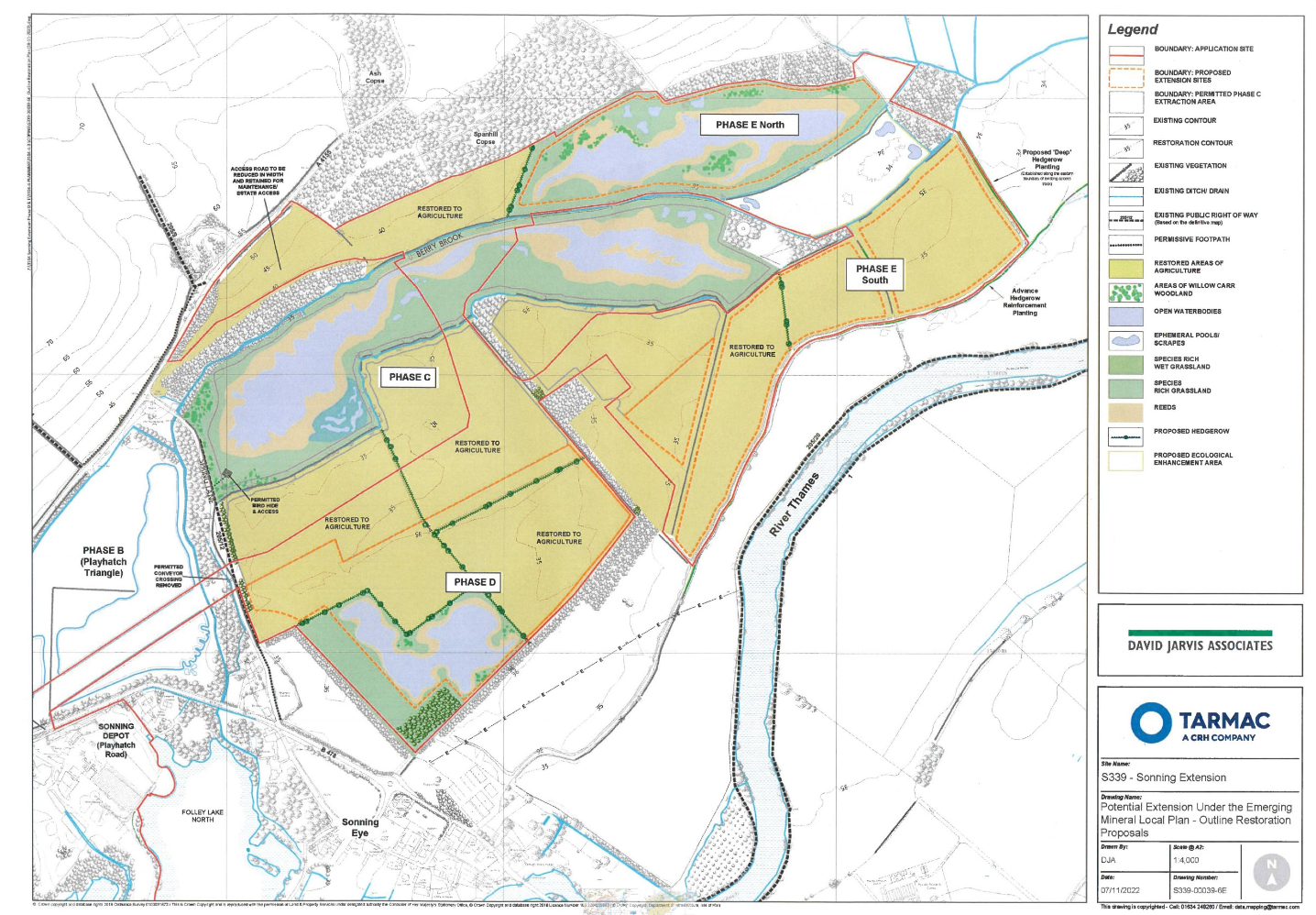Proposals
Sonning Quarry
The proposed new extension areas mark the fourth and fifth phases of mineral extraction at Sonning Quarry. We currently have planning consent to extract mineral reserves in Phase C, but these reserves are expected to be exhausted by 2027.
The proposed extensions would extend the life of the quarry by a further 15 years, enabling us to continue to meet local demand. The minerals we extract are vital components for manufacturing concrete for road construction and other infrastructure projects, as well as concrete blocks, bricks, and pipes for all scales of construction projects.
Using a series of bespoke measures to minimise any impacts, we propose to work Phase D in four phases moving clockwise, starting at the southern-most part closest to Sonning Eye. We would then move onto Phase E, which would be worked in a general anti-clockwise fashion starting in the south.
Operations
Our proposed new Phase D and E extension areas would not change the current intensity of operations. This means that there would be no change to existing operational practices, such as the number of lorry movements or working hours. The access to the existing processing site on Playhatch Road and the access off the A4155 will also remain the same. All water management measures that have been proven to be highly effective in minimising the risk of flooding in Phase C will remain and be carried forward.
Reducing the impact of our operations on the local community is our number one priority, with the way we currently extract and process the mineral remaining the same. Currently, extracted mineral is transported from the extraction area to the plant site for processing via an existing overland conveyor. This then passes over Spring Lane and Playhatch Road using a conveyor bridge system so as not to impact the local road network. This same network would simply be expanded to support the proposed extraction operations in Phases D and E.
The mineral from the new extension areas would be extracted and restored on a phased basis. This means we can restore sections of each site as we go, minimising the amount of land under extraction at any one time. To restore these areas, we would use materials available on site (soils and clays etc.) supplemented, where necessary, with recycled bricks and clay from construction sites around the county. This is the approach currently used in Phase C.
While the site is well enclosed by existing landforms and vegetation, we are undertaking a Landscape and Visual Impact Assessment (LVIA). This means we’ll ensure that the site blends into its surroundings. For example, a deep hedgerow has been planted west of Phase E and the existing woodland and hedgerows along the south of Phase E have been enhanced.
To support the planning application, we have conducted extensive environmental assessments. These include: air quality, noise, landscape and visual, ecology, arboriculture, climate impact, archaeology and heritage, hydrology, hydrogeology and flood risk, transport, along with a Health Impact Assessment. You can read more about these on our information boards or download by clicking here.



